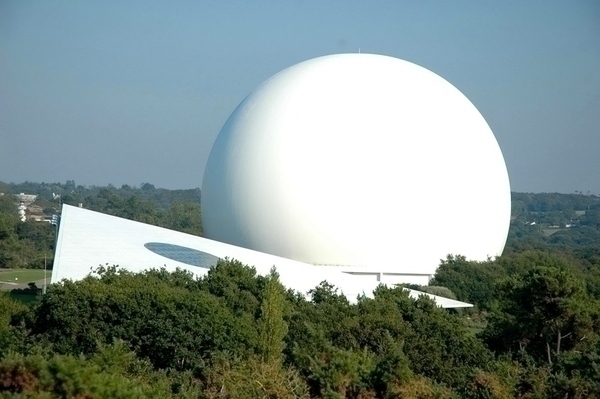Pharaonic works: making all the world a stage
In 1960, engineers from the American firm AT&T met with their counterparts in Western Europe to discuss the possibility of relaying televisions signals across the Atlantic via satellite.
Setting up transatlantic co-operation involved a search for willing partners to undertake major construction works in return for a place on the new world stage of satellite communication. AT&T, and in particular their Bell labs, worked in co-ordination with British General Post Office, as well as the French PTT, to develop a small satellite and the receiving equipment on the ground that would be able to capture and relay the television signals coming from the satellite.
The British Post Office chose its site at Goonhilly Down in Cornwall to construct a giant receiving dish of its own design. This, they believed, would allow it the independence to develop its own network as needed. The French accepted an offer of assistance from Bell labs to construct a receiving station. As a result, nearly identical ground stations were built at Andover, Maine and in Pleumeur-Bodou in Brittany. The materials for Pleumeur-Bodou were packaged up and shipped from the USA, and had to be assembled on site. By 1961, the eighteen-month race to completion was underway.
The massive scale of the construction involved literally thousands of workers to complete the project on time, and doubts prevailed that the French site in particular would be ready.
 Previous Story
Next Story
Previous Story
Next Story
How to cite this page
Alexander Badenoch, 'Pharaonic works: making all the world a stage', Inventing Europe, http://www.inventingeurope.eu/media/pharaonic-works-making-all-the-world-a-stage
Sources
- Schwoch, James. Global TV: New Media and the Cold War, 1946-69. University of Illinois Press, 2008.




















